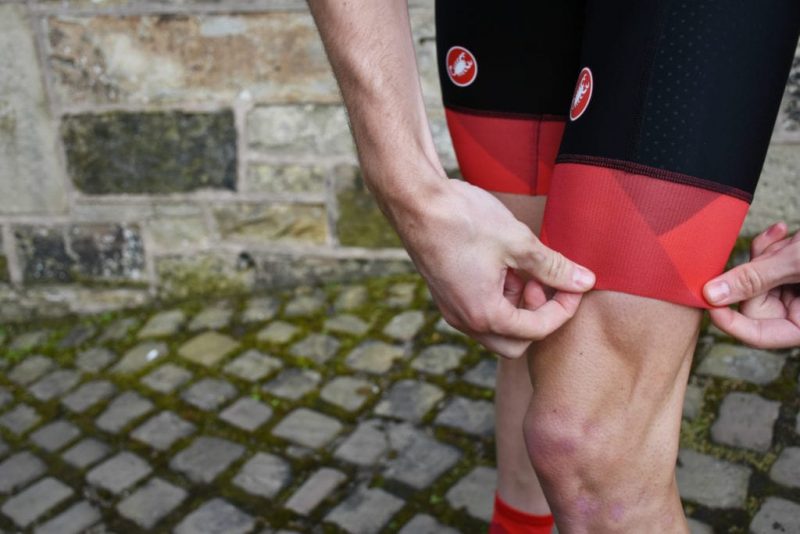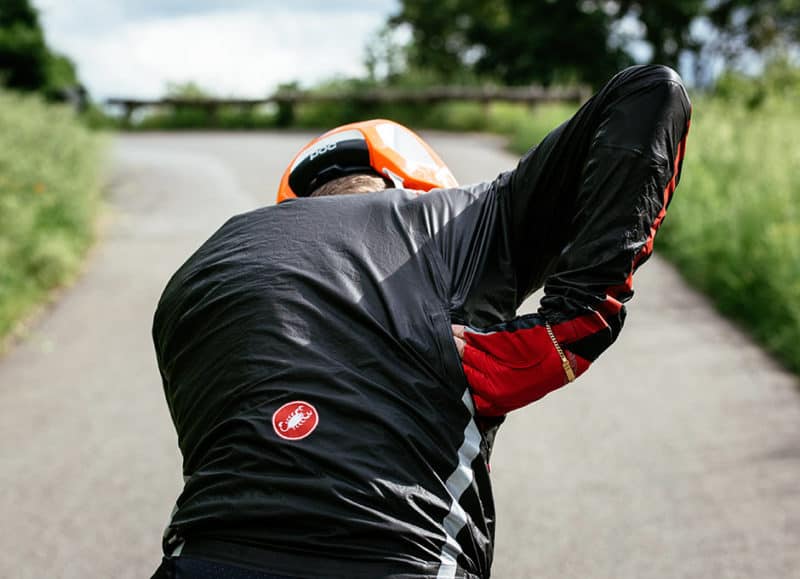A Beginner’s Guide to Cycling Jerseys
Finding that perfect cycling jersey for the summer months isn’t always as easy as picking the one that simply looks the best.
It’s always a good idea to do a little research in order to make the best-informed purchase, especially when you’re going to spend more than $100 on that single piece of apparel.
Here’s what you should know before pulling the trigger on a cycling jersey.
On This Page
Fabric Materials
When it comes to cycling jersey materials, you’re going to see a few words describe these pieces of apparel; lightweight, breathable and comfortable.
Obviously, that’s the goal of any cycling jersey designed for use in the hot summer months.
Material engineers have worked hard to find that perfect blend of fabrics, which is why you’ll see several synthetic materials, like polyester, often combined with nylon due to its durability and weight.
These fabrics do a great job at wicking away moisture and regulating your body temperature, which is why these jerseys tend to be so expensive.
There really isn’t a perfect fabric material for a jersey, as long as it’s breathable and has enough flexibility, they’ll be fine.
Jersey Fit
Fit is very subjective and open to individual interpretation. Some cyclists prefer a tight fit while some prefer a regular, looser fit and there are also many who are anywhere in between.
These days, there are two main fit types by most of the major brands.
- Race/Aero Fit is often referred to as second skins because they fit tightly to the body in order to cut down on any flapping materials that could slow your ride down. A good example is the Castelli Aero Race 6.0 Jersey. While this fit is great for helping with speed, it’s also great at moisture management. Comfort and sizing is the main issue with race-fit jerseys. Brands are all over the place with sizing, so you may need to try a few to figure out which size works best for you.
- Relaxed Fit. These jerseys such as the Castelli Entrata V Jersey are designed for the more casual cyclist who likes getting in a good workout but isn’t concerned about being as aerodynamic as possible. Think of the cyclists who end their rides at a brewery or coffee shop. That being said, relaxed fit jerseys can still be really lightweight and include fabrics that help with moisture management. You just won’t see cycling pros lining up on race day wearing a baggier jersey.
Jersey Design
Cycling jerseys are more than just about performance. Design is also a critical element.
Let’s face it, most of us aren’t going to be lining up in a professional race, so we mine as well look good while we’re hitting the hills on the road.
The Castelli Climbers SL, Le Col Pro Air, and Velocio Radiator Mesh, for example, touts its breathability and lightweight-ness, but a big selling point is its intricate design that looks awesome while riding.
Of course, the design is all about personal preference. Any jersey on this list above performs great for the everyday cyclist, so make sure to pick one that offers a color and design to your liking.
Sleeves Length
Comfort is the name of the game when it comes to sleeves. If you notice what the pros wear, the sleeves are longer these days compared to 10 years ago.
If you have a jersey with too short of sleeves, you’re going to feel some uncomfortable pinching in your armpits, which can ruin your ride. That’s why most sleeves end just above the elbow today, to ensure total comfort.
So how do you determine if the length of the sleeve is ideal and comfortable?
The important thing to know is that the sleeves will eventually make their way up your arm, towards the armpit when you’re in a riding position.
If there is a cyclist modeling the jersey, look at where the end of the sleeve is. That will be an accurate indicator for most people.
Alternatively, if there’s no model, the length should be longer than your normal t-shirt. It might look weird, but when you put it on, it will fit just fine. If it’s too short when it rolls up, then it might dig into your armpits. Not comfortable.
Torso Length
The ideal torso length should be around your hip bones. For some brands, it might be a tough task to get the ideal trifecta of fit, sleeves, and torso length unless the jersey is individually tailored, which most of us don’t have this privilege.
What happens if the torse length is not ideal?
- Too short and you’ll constantly feel the bottom front of the jersey wrapping around your belly button. It might even move further up towards the stomach as you’re in your riding position.
- Too long and you’ll feel a tonne of weight on your lower back especially if you have your back pockets full.
Back Pockets
Pretty much all cycling jerseys feature three pockets used to store snacks, keys, and a cellphone. But some jerseys, such as the Le Col Pro Air, include a fourth pocket on the sides that typically features a zipper and is waterproof.
The more important aspect of pockets is depth.
You can fit most snacks like energy gels or bars into most pockets. But when it comes to smartphones, things are trickier. Some of us have big smartphones such as the Samsung Galaxy S2 Ultra or iPhone 12 Pro which some pockets couldn’t really fit entirely.
Ensure the pocket is deep enough, such as the Velocio Radiator Jersey.


